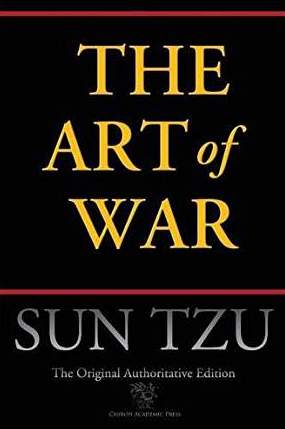Lessons from "The Art of War" for Project Management Success (IV)
How to Plan More Effectively

“The Art of War” is one of the most ancient books on strategy and one of the most famous books of all times. On the surface, it is about how to win a war but a lot of what is said is applicable to project management.
Planning is one of the most crucial steps in any project. In the final part of our series, we will explore how to apply Sun Tzu's wisdom on planning to manage your projects more effectively.
Sun Tzu's direction on planning, as quoted by R.L. Wing, may be the strongest case for project management in the entire text:
Those who triumph,
Compute at their headquarters
A great number of factors prior to a challenge.
He goes on to explain that those who spend less time planning do not succeed. According to Sun Tzu,
more planning = greater success,
less = greater chance of failure and
no planning at all pretty much guarantees you have no shot.
The first chapter of The Art of War ends with Sun Tzu claiming that by observing the time spent in “computation” he can determine whether or not one will succeed in their efforts.
From a PM’s standpoint, this has relevance on a number of levels. The most obvious application would be to the idea of actually planning out a project, and if you follow the rest of the lessons of “The Art of War”, this is going to end up bringing in many of the elements included in a traditional project plan. Things like risk planning and developing a communication strategy are critical aspects of Sun Tzu’s formula for success.
How to apply the direction on business meetings
One application that might not be so obvious is how this planning can play out on a smaller scale. Something as simple as a business meeting, offers a great opportunity to prove out some of Sun Tzu’s claims. If you’ve ever been in a meeting where you arrived not knowing what was going to happen, or what you were going to say ahead of time, you are probably already all too familiar with the formula for defeat that is mentioned above.
For my own part, this is a lesson that took a long time to learn, but over time I have learned that if I make the time for “computation” before a meeting, things go much better.
In terms of preparation, working out things like how the Five Measures fit within the context of the meeting, thinking through what will take place based on who is likely to be present, what objectives or motivators they might have, who might say what, how the others in the room will respond, and especially, how to raise the issues I need addressed as well as how to respond to the questions I’m likely to be asked, seems simple but it is unfortunately something most people don’t take the time to do.It may sound like a lot of work, but my experience has been that once you get into a habit of doing it, this tends to come fairly easily. Whatever your goals in the meeting, even if it is just to get through it with your job intact, putting in the time to prepare before hand is just basic risk management. It will give you the freedom to devote the time and attention necessary to cover the things you were not able to think of before hand.
If success in the meeting equals getting your issues addressed without losing credibility, taking the time necessary to be prepared to participate with confidence and ease is just basic risk management, the same as you’d do on any project. And as for the others around the table, as Sun Tzu says, examining they prepare will give you a lot of insight into their ability to succeed or fail once things get underway.
What Sun Tzu would say about agile project management
While it can be fairly simple to see how this applies to Project Management, it has a lot of relevance to an Agile approach as well. If taking an Agile approach is intended to offer the freedom to handle constant change while incrementally working towards a desired goal, “The Art of War” is right in step. The basics of things like forming the team, having the team determine how they will best work together, what the vision statement is, etc. are all part of the “computation” Sun Tzu is talking about.
These practices have even greater application later on in The Art of War. In a later section of the book Sun Tzu talks about the need to be fluid and adaptable, in order to do this successfully, someone leading an Agile project, or an Agile team, still needs to take the time to understand the basic concerns mentioned in this chapter.
Conclusion
The bottom line is, success is determined by your ability to make the time to learn about what you are facing and considering what will happen when things get underway. Or, as President Eisenhower put it, “The plan is useless; it’s the planning that’s important.”

